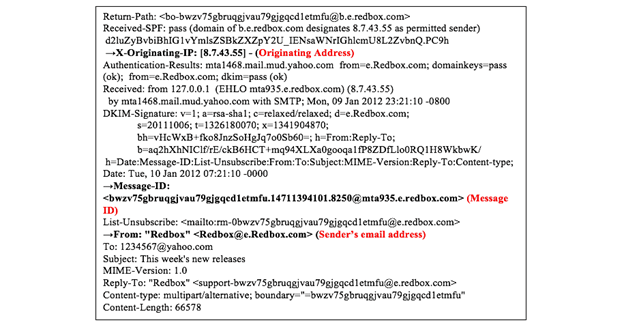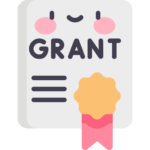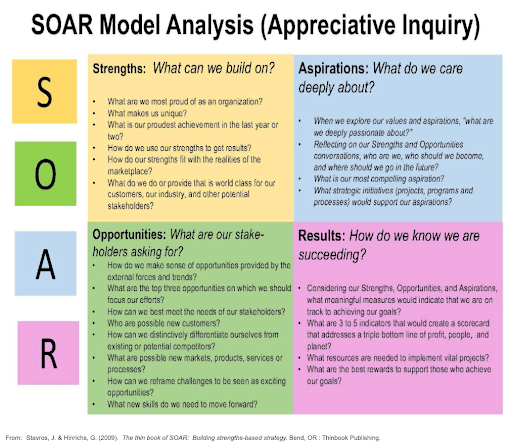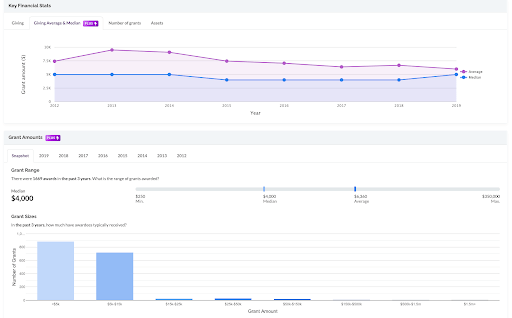
How to Improve Email Deliverability
September 28, 2021John Van Arnam’s The Third Talk Reveals How Porn Affects Children’s Health
October 3, 2021A Beginner’s Guide to Winning More Grants for Your Nonprofit

Did you know there are more than 87,000 foundations that award grants?
Did you also know that 49% of nonprofit employees expect cost cuts this year and 54% of nonprofit leaders have implemented changes to organizational goals and activities?
Now more than ever, it’s vital for nonprofits to diversify their funding sources. If your nonprofit doesn’t have a diversified funding strategy, you leave yourself vulnerable when a major source of funding dries up.
That’s where the power of grants can come in. In this blog post, we’ll first explore why grants are important to nonprofits. We’ll then cover what challenges nonprofits often face seeking grants and what steps a nonprofit can take to start pursuing grants before wrapping up with five tips to start or continue to scale your grantseeking efforts. Let’s dig in!
Why grants are important to nonprofits
 Grants can be a great way to diversify your nonprofit’s revenue. This is because grants are useful for a variety of funding opportunities. Whether you’re looking to bolster your education or outreach efforts, or find support for general operating expenses, grants are invaluable. Those 87,000+ grantmaking foundations have to give every year.
Grants can be a great way to diversify your nonprofit’s revenue. This is because grants are useful for a variety of funding opportunities. Whether you’re looking to bolster your education or outreach efforts, or find support for general operating expenses, grants are invaluable. Those 87,000+ grantmaking foundations have to give every year.
In fact, foundations must give 5% of the average market value of their net investment assets every year—meaning there is grant money out there for your nonprofit.
What challenges do nonprofits face seeking grants?
The challenge that nonprofits face, though, is not knowing how to find the good fit grants that can support their programs and initiatives. That’s where knowing what data to dig into is important. If you knew exactly what free and paid resources are out there, you’d be able to more easily pinpoint the 5-10 opportunities that are worth your nonprofit’s limited time.
Many nonprofits also don’t have a system of steps they can use to get to the point of regularly submitting grants. They often resort to either tasking an ill-equipped staff member or intern to submit a grant proposal when that person has limited experience understanding the grantseeking process. Or, nonprofits will spend several thousand dollars hiring a grantwriting consultant and experience mixed results (where they fail to secure a grant). They might even win grants but don’t fully understand exactly what their consultant has done for them. This leaves them again without a system to scale their grantseeking efforts.
What steps can a nonprofit take to prepare for grants?
 There are five simple steps you can take to prepare your nonprofit for grants:
There are five simple steps you can take to prepare your nonprofit for grants:
- Make sure you’re discoverable.
- Ask for your board or community’s help.
- Strategically outline your funding strategy.
- Think of your programs in projects.
- Adopt a decision-making framework.
Step 1: Make sure you’re discoverable.
Making sure you’re discoverable can be as simple as ensuring your nonprofit’s website is up-to-date. Be sure to feature your mission and vision statements, impact on your community, and contact information. A question to ask yourself when you visit your nonprofit’s site is, “Can I easily understand what my organization’s purpose is and is it easy to measure the impact it has had on our community?”
If you cannot answer this question within a minute of visiting your site, it’s time to update your site to communicate that more directly. For inspiration, it can be helpful to peruse the websites of similar organizations in your community. Perhaps you could also look at nearby states that serve similar populations to those you serve. This way, you can get a feel for how organizations with aligned missions position themselves towards funders.
Step 2: Ask for your board or community’s help.
Asking for your board or community’s help can mean taking a list of grant opportunities and seeing whether or not someone connected to your organization already has a relationship and can introduce you to that funder. A great way to do this in combination with your grant prospecting workflow is to use your favorite grant prospecting tool. Identify 5-10 good fit opportunities by reviewing the funder’s 990 report, and then generate a report from that tool to review at your next board meeting. Not every grant tool can do this, but you may find ones that are helpful in this regard.
Step 3: Strategically outline your funding strategy.
How can you strategically outline your funding strategy? Take time out of your week to call a team meeting and asking questions. What are our goals for individual giving vs. grants this year? What percentage of funding do we want to target coming from private foundations vs. federal or corporate opportunities?
Beyond just setting funding goals for the year, you may find it valuable to leverage the SOAR Model to better plan your nonprofit’s priorities. The SOAR Model comes from the Libraries of the University of Missouri and focuses on reviewing your organization’s strengths, opportunities, aspirations, and results.
The key question to answer when reviewing your strengths is what can your organization build on? When answering the question on opportunities, you must be able to comprehensively answer what are our stakeholders asking for? Addressing your aspirations is all about what it is that you all care deeply about. And lastly, results are about answering how you know your nonprofit is succeeding.
Schedule a team meeting with your organization to run through the SOAR Model more in-depth. This reflection should help ground you. Then, update any previous fundraising goals and start implementing and tracking your outcomes.
Step 4: Think of your programs in terms of projects.
Thinking about your programs as projects can also make a big difference in your grant proposal. Often, nonprofits write about their programs, which are ongoing initiatives that help them fulfill their organization’s mission. However, they’d benefit from instead positioning their programs as projects.
The distinction is that projects have more finality in since they are usually associated with outcomes. When you position your programs as projects, you make your proposals more fundable. This is because funders can understand exactly what you are doing, and how you are measuring your impact before and after they fund you.
Projects are typically shorter-term initiatives with clear outcomes that ultimately help your nonprofit fulfill its mission.
Step 5: Adopt a decision-making framework.
Lastly, adopting a decision-making framework means finding a logic model or decision making matrix that works for you. For example, you may decide to adopt a weighted rubric where you consider different factors relevant to your nonprofit.
Your criteria in this case might include but not be limited to: what percentage of grantees for a foundation were new vs. returning, if the grant proposal process is easy or if it requires multiple team members’ time, the strenuousness of the reporting in the case a grant is awarded, or what areas of impact this funder traditionally funds most and if it aligns with your organization.
After you’ve created your first take on your decision-making framework, you’ll want to run your last two or three grant proposals through that framework. The key question to be asking yourself is whether or not your organization should have pursued that grant if you had used the framework at the time you applied for the grant.
Once you’ve run your initial framework through this stress test, you can adjust your framework as you and your nonprofit team deem fit until it is well calibrated to your organization. You’ll know when you’re there when the framework has helped you clearly decide go and no-go situations that mirror the consensus of your grantwriting teams.
What are some grant writing tips to help nonprofits scale their grantseeking process?
Nonprofits who see the most success with grants are able to achieve their results because they develop a system. They know that if they apply to a certain number of grants, their win rate should amount to a certain number of dollars. They also know what their renewal odds are for grants, meaning they can forecast and set clear goals looking ahead of their current funding year.
Here are a few grant writing tips to help your nonprofit start to develop a system for grantseeking:
Tip #1: Assess your grantwriting team’s tooling.
 Too often, grant writing teams have a disjointed workflow. They use one tool for grant prospecting, another tool for grant deadline reminders, and another tool for grant management. This can ultimately lead to more busywork rather than productivity.
Too often, grant writing teams have a disjointed workflow. They use one tool for grant prospecting, another tool for grant deadline reminders, and another tool for grant management. This can ultimately lead to more busywork rather than productivity.
Calling a team meeting and considering what tools are truly meeting the needs of your nonprofit and which ones are creating more busywork can be helpful. Furthermore, exploring alternative workflows that help consolidate tool use can streamline your process. Some grant tools help you bring grant prospecting, tracking and management to one place.
Tip #2: Assign clear responsibilities before, during and after a grant proposal is submitted.
Make sure your team members know their roles and responsibilities in getting a grant proposal past the finish line. Sometimes smaller organizations bottleneck everything to their Executive Director, but this does not scale. It is far more efficient to list out all of the common things that must be done for a grant proposal and then divide and conquer.
For example, when it comes to preparing the budget, one person or a dedicated team should be responsible for that portion of the proposal. If you cannot clearly answer who you go to for a certain part of your grant process, stop working on your proposal. Instead, focus on improving your distribution of responsibilities.
Tip #3: Create and document your grantseeking SOP.
Systems run on clear steps. This means that specific inputs should lead to key outputs. If it’s unclear what your organization’s process is for applying for a grant, then it’s time to sit down and document each step.
From here, you should be able to know the things you do before you submit a grant application, the steps you take when submitting, and the procedure you take when dealing with grant reporting. This is where tooling like an Asana, Clickup or Instrumentl can be helpful. You can then set up tasks for your team based on where you’re at in the grant writing process.
Every quarter, review your process and update to account for any hiccups that happened during the grant proposals you submitted over the course of the quarter.
Tip #4: Dig into the funder 990s to identify good fit funders for grants.
Too often, nonprofits have no idea what to do when it comes to identifying good fit funders.
Form 990s are rich with data. If you’re looking to do this for free, you might access a site like ProPublica and review the 990 PDFs for similar organizations to yours, common grant award amounts, or key people to potentially contact. If you’re using a more sophisticated grant tool, you should dig into the funder profile to review what percentage of grantees were new vs. returning, what the average or median grant amounts were, or what the most common areas of giving were.
Some grant tools have advanced data insights to help you identify good fit funders.
Tip #5: Pick up the phone and call the funder before you apply.
Grant writing isn’t as complicated as you might think. Before you start working on a proposal, you should try to pick up the phone and call the funder to learn more about the funding opportunity. If the funder doesn’t pick up, send them an email. In today’s day and age, nonprofits are quick to invest their limited bandwidth on opportunities where they frankly didn’t have much of a winning chance to begin with. The goal here is to see what information you can collect before you put your “pen to paper.”
The Wrap Up: How to Win More Grants for Your Nonprofit (for Beginners)
 If you want to win more grants, you need to invest in your grant efforts.
If you want to win more grants, you need to invest in your grant efforts.
Grants are not a “set it and forget it” funding channel. It’s usually best for nonprofits not to pursue grants until they are at least at $90,000 in operating revenue and have formal 501c3 status. It’s also helpful to have sufficient bandwidth to work on grants before you start your grantseeking efforts.
By now, though, you should have what it takes to get started. In the case where you’d like to learn more about how to win more grants, be sure to check out the recorded webinar on How to Go from Zero to Hero with Your Grant Strategy, a Nonprofit Hub and Instrumentl collaboration.
About the Author
Will Yang leads growth at Instrumentl, the institutional fundraising platform. Instrumentl brings grant prospecting, tracking and management to one place. Nonprofits that use Instrumentl apply to 78% more grants within a year of adopting it and are able to find more good fit grants for their organizations. If interested, check out Instrumentl’s Nonprofit Hub member’s only offer to save on an annual subscription.
The post A Beginner’s Guide to Winning More Grants for Your Nonprofit appeared first on Nonprofit Hub.


